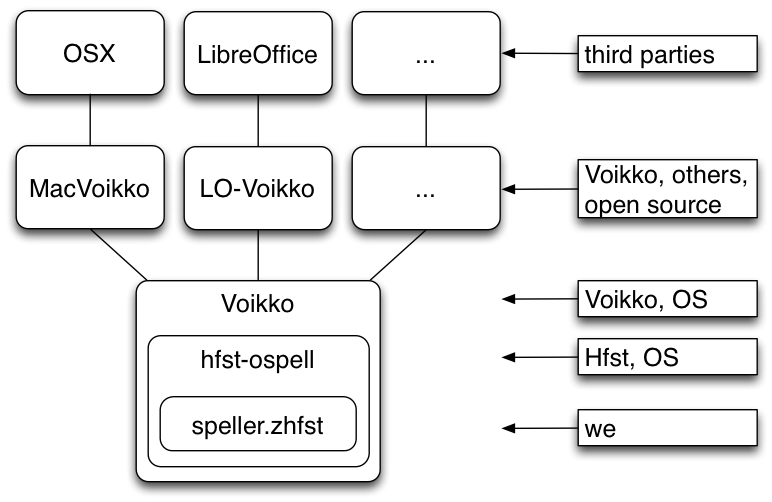Building Spelling Checkers
Spellers in the Giella infrastructure
University of Alberta, Edmonton, June 15 2015
Sjur Moshagen, UiT The Arctic University of Norway
Presentation Overview
- How to build a speller
- speller integration
- lexicon considerations
- suggestions - the interface of the speller
- error data
- error model
- testing
Background
The perfect speller
- detects all errors
- ... and only errors
- suggests the relevant correction on top - always
This tool will never exist, but it is the holy grail we work towards.
One reason it will never exist is the problem of precisely answering the
What is a spelling error?
- not always easy to define...
- ... the simplest definition: a non-word intended to be an exising word
- this is used as the basis for most spelling checkers
- ... where word = space-separated string of letters
- more complex errors are often handled by so-called grammar checkers (although
How to build a speller
Building an fst-based speller in the Giella framework goes like the following:
The acceptor
raw-fst | | <- filters | speller-fst (normative, without punctuation) | | <- compounding and derivation filters, adding weights | fstspeller-fst | | <- remove the upper (analysis) side | acceptor
The error model
The error model is still a bit in the flux, so the following may not hold
The error model is presently built from several indivual parts:
- edit distance file (edit distance 1 or 2)
- string replacement file
- word replamenent file
- possible enhancements coming up:
- special treatment of first and last letters
- possibility to build more complex error models using regexes or xfscripts
- special treatment of first and last letters
Each part is compiled into an fst, and unioned into one error model file.
Speller Integration
- Components
- What Do We Control?
Components
Each component can add restrictions or specific behavior for the speller, and

What Do We Control?

The Lexicon
- we want to cover the whole language
- ... but what IS the whole language?
- a string that is an error in one context can be desired in another, especially
- another aspect is suggestions:
- we try to suggest lexicalised compounds and derivations above dynamic ones
- adding known compounds and derivations to the lexicon as such should thus
- ... but a very big speller lexicon will be slower (this may not be a problem
- we try to suggest lexicalised compounds and derivations above dynamic ones
- sometimes a correct but very rare word can cover up a common misspelling of a
- if so, it is usually best to remove the rare word from the speller
- if so, it is usually best to remove the rare word from the speller
Lexicon Sources
- dictionaries - but use them critically
- they do not often contain "obvious" or productive patterns
- rather the exceptions to the patterns
- they do not often contain "obvious" or productive patterns
- complement dictionaries with corpus resourches as much as possible
Restrictions On The Grammar
- an fst is a very good tool to formalise the productive patterns in a language
- but sometimes the fst can be too productive, and we get overgeneration
- this is a problem in two ways:
- misspellings not found
- strange suggestions
- misspellings not found
- we thus need to restrict such patterns when needed
- compounding
- derivations
- compounding
- it is often best to use flag diacritics for this, to avoid that the fst blows
- in the Sámi languages we use tags to describe normative compounding, and
We have a similar system for derivations, based on position in a derivation
Suggestions - The Interface Of The Speller
Getting good and relevant suggestions is an important aspect of the speller.
On the other hand, if they get strange suggestions, it is also indicative of a
Designing An Error Model
The infrastructure is built to automatise as much as possible, but here are some
- keep the error model alphabet as small as possible, and only with letters
- use longer string replacements with low weights for known spelling error
- give low weights to letters and letter pairs typical of misspellings
- use a corpus of regular text to generate frequency weights
- add positive or negative weights to specific tags to promote or demote

